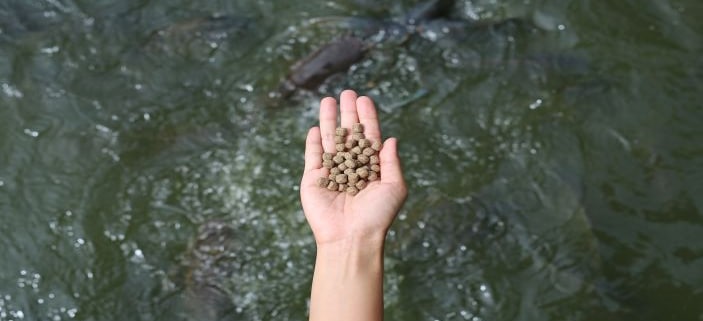Improve palatability of aquaculture feed
Palatability of aquaculture feed is key in determining efficient nutrient utilization and reducing economic losses in aquaculture. By controlling this characteristic it is possible to improve the performance of aquatic species and the amount of waste.
by Gwendolyn Jones
Why is aquafeed palatability important?
Feed palatability is one of the first criterions checked by fish and shrimp farmers to determine the quality of aquafeed. Feed palatability affects feed intake and as a result influences nutritional, health and environmental key performance indicators in aquaculture.
Palatability of aquafeed reduces feed loss
Feed makes up for 30-60% of the total variable cost in aquaculture. Hence minimizing feed loss is important for the economic performance of fish and shrimp farms. On top of that feed loss plays a major role in the environmental impact of aquaculture and the health of the pond. A nutrient overload of the pond as a result of excessive feed loss and nutrient leaching leads to deterioration of the rearing environment and pollution.
Improved aquafeed palatability and attractiveness helps to reduce the time that shrimp and fish spend approaching the feed and increases feed intake. It therefore limits nutrient leaching and feed loss.
Reduction in the use of fishmeal reduces feed palatability
Due to economical and sustainability reasons the proportion of dietary fish meal in aquafeed formulations is continuously decreasing and is replaced by alternative protein sources based on plant raw materials. However, this has negative consequences for optimal feeding behavior that needs to be compensated for especially in carnivorous feed formulations.
Reduced growth in aqua species when fed diets with alternative protein sources is caused by:
- reduced protein digestibility
- amino acid deficiency and imbalance
- anti-nutritional factors
- unpalatable properties
Strategies to improve aquaculture feed palatability
In order to improve palatability of shrimp and fish feed, palatants/stimulants gained increased attention especially when plant proteins are included at a high level.
Palatants/stimulants characteristically are low molecular weight, water-soluble, and amphoteric or compounds that are released from potential prey. Free amino acids have been found to elicit strong feeding behaviour, as well as organic compounds with low molecular weight, such as organic acids, nucleotides and small peptides. Reports have shown that L-Amino acids were more stimulatory than the corresponding DL-amino acids.



